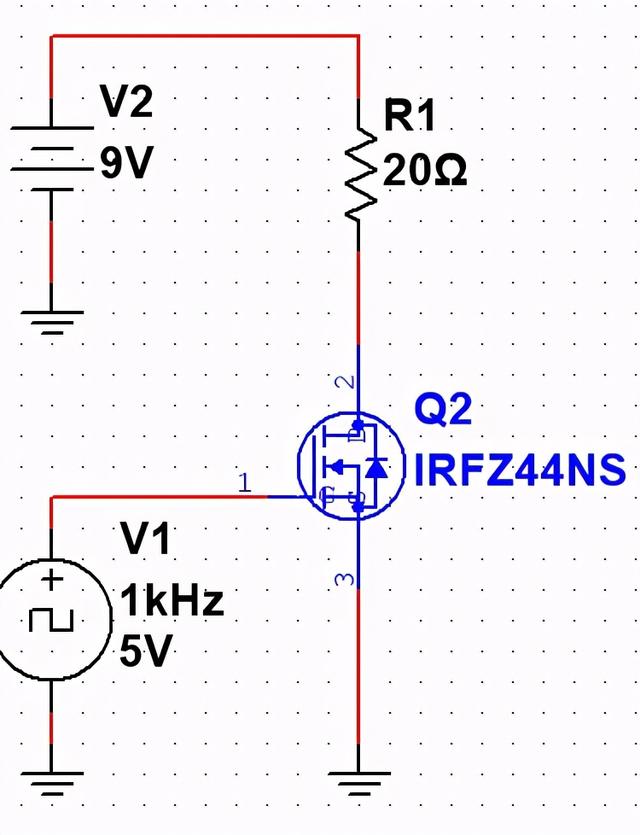可編程邏輯系統通常部署在可能存在噪聲的應用中。這種噪聲會影響可編程邏輯設計接收的信號。例如,它可能會導致信號故障或跳動,如果處理不當,可能會導致設計和操作出現問題。

毛刺的持續時間是隨機的,并且與時鐘沿不同步。因此,它們可能會導致下游信息損壞。
處理此問題的最常見方法是使用毛刺濾波器來濾除毛刺和反彈。
毛刺濾波器核心是使用長度可變的移位寄存器,噪聲信號被放到寄存器中,直到移位寄存器的所有值都一致。此時,信號可以視為穩定。當然,我們必須確定潛在毛刺和反彈可能持續多長時間,以確保時鐘周期的寄存器大小正確。這就是為什么我們的毛刺濾波器需要非常靈活,并且需要確保其大小能夠適合每個應用程序的要求。
濾波器應該能夠接收噪聲輸入并濾除持續時間為多個時鐘脈沖的毛刺。

libraryieee; useieee.std_logic_1164.all; useieee.numeric_std.all; entityglitch_filteris generic( G_FILER_LEN:integer:=8 ); port( i_clk:instd_ulogic; i_noisy:instd_ulogic; o_clean:outstd_ulogic ); endglitch_filter; architecturebehaviourofglitch_filteris signals_delay_line:std_ulogic_vector(G_FILER_LEN-1downto0); signals_delay_and:std_ulogic; signals_delay_nor:std_ulogic; signals_output_clean:std_ulogic; begin o_clean<=?s_output_clean; ????--Delay?disctete?using?delay?line ????synchroniser_process?:?process?(i_clk)?begin ????????if?rising_edge(i_clk)?then ????????????s_delay_line?<=?s_delay_line(G_FILER_LEN?-?2?downto?0)?&? ????????????????????????????i_noisy; ????????end?if; ????end?process; ????--Generate?AND?and?NOR?of?delay?line?bits ????s_delay_and?<=?'1'?when?to_01(s_delay_line)?=? ????????????????????????????(s_delay_line'range?=>'1')else'0'; s_delay_nor<=?'1'?when?to_01(s_delay_line)?=? ????????????????????????????(s_delay_line'range?=>'0')else'0'; --Setdiscretebasedondelayline output_process:process(i_clk)begin ifrising_edge(i_clk)then ifs_delay_nor='1'then s_output_clean<=?'0'; ????????????elsif?s_delay_and?=?'1'?then ????????????????s_output_clean?<=?'1'; ????????????end?if; ????????end?if; ????end?process; end?behaviour;
為了測試這個模塊,創建一個簡單的測試文件,它將隨機數量的毛刺注入信號中。在信號改變狀態后,許多隨機毛刺被輸入到信號中。如果濾波器運行正常,則這些毛刺將在毛刺濾波器輸出干凈的信號。
libraryieee; useieee.std_logic_1164.all; useieee.numeric_std.all; useieee.math_real.all; entityglitch_filter_tbis end; architecturebenchofglitch_filter_tbis componentglitch_filter generic( G_FILER_LEN:integer ); port( i_clk:instd_ulogic; i_noisy:instd_ulogic; o_clean:outstd_ulogic ); endcomponent; --Clockperiod constantclk_period:time:=10ns; --Generics constantG_FILER_LEN:integer:=8; --Ports signali_clk:std_ulogic:='0'; signali_noisy:std_ulogic; signalo_clean:std_ulogic; begin i_clk<=?not?i_clk?after?(clk_period/2); ??glitch_filter_inst?:?glitch_filter ????generic?map?( ??????G_FILER_LEN?=>G_FILER_LEN ) portmap( i_clk=>i_clk, i_noisy=>i_noisy, o_clean=>o_clean ); uut:process variableglitch_duration:integer; variableseed1:positive:=1; variableseed2:positive:=283647823; impurefunctioninteger_random(min,max:integer)returnintegeris variablerandom:real; begin uniform(seed1,seed2,random); returninteger(round(random*real(max-min)+real(min))); endfunction; begin i_noisy<=?'0'; ????wait?until?rising_edge(i_clk); ????wait?for?G_FILER_LEN?*?clk_period; ????test:?for?i?in?0?to?1?loop ????????i_noisy?<=?'1'; ????????wait?until?rising_edge(i_clk); ????????glitch_duration?:=?integer_random(1,5); ????????for?x?in?0?to?glitch_duration?loop ????????????i_noisy?<=?not?i_noisy; ????????????wait?until?rising_edge(i_clk); ????????end?loop; ????????i_noisy?<=?'1'; ????????wait?for?20?*?clk_period; ????????report?"loop?high?completed"?severity?note; ????????i_noisy?<=?'0'; ????????wait?until?rising_edge(i_clk); ????????glitch_duration?:=?integer_random(1,5); ????????for?x?in?0?to?glitch_duration?loop ????????????i_noisy?<=?not?i_noisy; ????????????wait?until?rising_edge(i_clk); ????????end?loop; ????????i_noisy?<=?'0'; ????????wait?for?20?*?clk_period; ????????report?"loop?low?completed"?severity?note; ????end?loop; ????report?"Simulation?complete"?severity?failure; ???? end?process; end;

運行仿真后顯示在信號狀態改變后隨機數量的脈沖便增加。檢查輸出信號表明濾波器已正確濾除輸入信號中可能存在的毛刺。
正如在一開始所說的,這樣的濾波器對于部署在可能存在電噪聲的環境中非常有用。與 BRAM 上的 EDAC 等其他緩解策略相結合,這是可用于實現設計彈性的關鍵方法之一。
審核編輯:劉清
-
濾波器
+關注
關注
162文章
8154瀏覽量
182451 -
寄存器
+關注
關注
31文章
5440瀏覽量
125063 -
狀態機
+關注
關注
2文章
493瀏覽量
28332 -
BRAM
+關注
關注
0文章
41瀏覽量
11334 -
時鐘脈沖
+關注
關注
0文章
19瀏覽量
12988
原文標題:【數字實驗室】消除毛刺
文章出處:【微信號:Open_FPGA,微信公眾號:OpenFPGA】歡迎添加關注!文章轉載請注明出處。
發布評論請先 登錄
TPA3110D2無信號輸入時,輸出336kHZ的正弦波信號有明顯的毛刺,如何濾除毛刺?
引入輸入濾波器來濾除噪聲設計
毛刺的濾波方法
怎樣去設計一個使用時序邏輯對單bit信號進行毛刺濾除操作的電路
FPGA | 競爭冒險和毛刺問題
電路從SDA和SCL線路中濾除毛刺的解決方法及過程
FPGA中的冒險現象和如何處理毛刺























評論